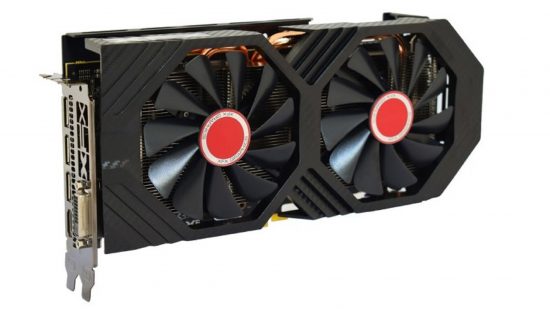Here’s an idea. Instead of Valve and Epic spending hundreds of millions of dollars on vanity projects, such as handheld game systems or giving away free games every week, they should build and sell graphics cards direct through their stores.
The recent AMD Radeon RX 6600 XT release raised the price of mainstream 1080’ graphics to around £330 inc VAT in the UK at launch, and that’s already gone up to well over £400 at most retailers. The genuinely affordable GPU market is pretty much dead.
This situation leaves a huge number of gamers without any upgrade path. We’re over a year into these ridiculous graphics card prices, and recent comments by a few semi-conductor CEOs state that we won’t see the other side of the chip shortage until 2023.
How long can mainstream 1080p gamers wait before giving up and changing platform? Another 18 months of this will see the market shrink and prompt developers to refocus on platforms other than PC. We’ve been lucky so far, with patrons such as Microsoft, Valve and Epic continuing to push PC gaming as a first-tier platform.
If gamers change where they spend their cash, it will hurt the bottom line of Valve and Epic. Subsidising affordable graphics cards and getting them in the hands of gamers in need would help desperate folks and build some community love.
Valve recently went to AMD to build a semi-custom chip for its Steam Deck, so AMD is clearly willing to entertain even moderately low-volume custom design. Poking AMD to license the design for a Radeon RX 570 and RX 590 shouldn’t be out of the question either.
Why older Polaris GPUs and not the latest RDNA2 ones? Well, it’s unlikely AMD will hurt its long-term partnerships with Sapphire, Asus, MSI and so on by letting a new customer undercut them. Plus, of course, AMD is currently enjoying great margins for its chips, publicly stating in its last investor relations announcement that it will focus on maintaining that situation, which means no discounts.
Even then, TSMC has no spare capacity anyway. Picking up an older Polaris GPU means going to GlobalFoundries and using its 12nm process, which should only take around half the time it takes TSMC to produce a 7nm chip.
None of the most popular games on Steam require extreme GPU performance. The likes of DOTA 2, Counter-Strike, Destiny 2, PUBG Battlegrounds, Fall Guys, Rainbow 6, GTA V, Civ VI or even Apex Legends can be played on older-generation cards fine. Also, while, the likes of triple-AAA games, such as Doom Eternal and Assassin’s Creed Valhalla, look spectacular on the latest gear, they can still be enjoyed on older hardware without taking away from the experience too much.
Rereleasing Radeon RX 570 and 590 cards would still be viable and affordable if they could retail for, say, £129 and £199 inc VAT respectively. These GPUs would make a world of difference over integrated graphics, while still being much cheaper than the latest graphics cards on the market today.
These cards don’t have to be built with flamboyant materials that manufacturers typically love to splash on their designs. They just need a simple, cost-effective design that’s quiet and reliable. That will surely benefit far more gamers than a stream of mediocre free games or a handheld console.
